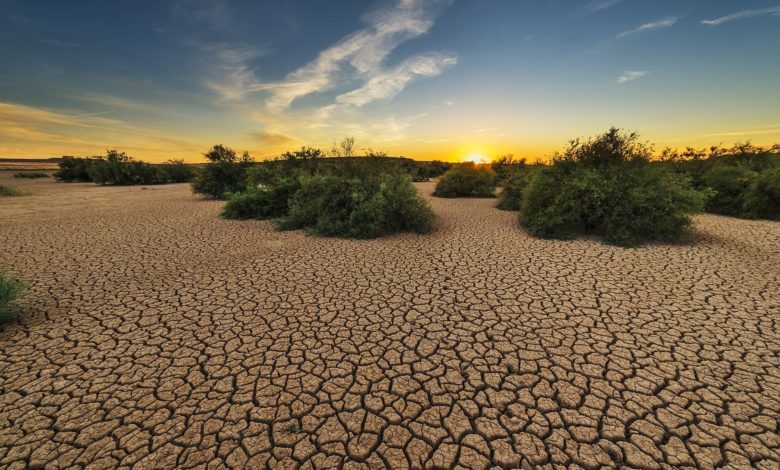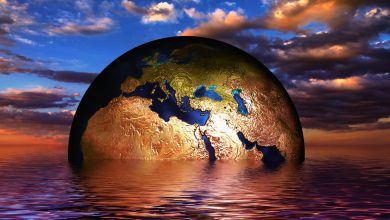Drought: Definition, Causes, Stages, and Results

As the summer approaches each year, seasonal drought concerns are growing around the world. During the winter, many places monitor the precipitation and the snow course to prepare for the situation that warmer and drier months may bring. In addition, there are areas where drought is a regular year-over-year event that lasts longer than just summer. From hot deserts to freezing poles, drought is a condition that affects plants, animals and people around the world. This article contains information about what drought is, its causes and stages.
What is Drought?
Drought is defined as the period in which a region has a deficit in water supply. Drought is a normal climatic condition that can occur from time to time in every part of the world. Generally, drought is mentioned from two points of view, meteorological and hydrological. Meteorologically, a drought takes into account deficiencies in measured precipitation. The measurements of each year are then compared with those determined as normal rainfall, from which drought is determined. For hydrologists, droughts, stream flow and lake, reservoir and aquifer water levels are controlled and monitored. Precipitation is also taken into account here as it contributes to water levels. In addition, there are agricultural droughts that can affect crop production and cause changes in the natural distribution of various species. Farms themselves can also cause droughts when the soil is depleted and therefore cannot absorb as much water and can also be affected by natural droughts.
Drought Causes
As drought is defined as a deficit in water supply, it can be caused by several factors. Yet most importantly it concerns the amount of water vapor in the atmosphere, because it is the factor that creates precipitation. Where there are humid, low pressure air systems, more rain, sleet, hail and snow may occur. Instead, if there are above-average dry, high-pressure air systems in place, less moisture is available to produce precipitation (because these systems cannot hold too much water vapor), resulting in a water shortage for the areas in which they move.
The same can happen when winds change air masses and, unlike colder, humid, oceanic air masses, warm, dry, terrestrial air moves over an area. El Niño, which affects the water temperature of the ocean, also has an effect on rainfall levels, because it can shift air masses over the ocean during the years when the temperature cycle is present, often making wet places prone to drought and dry places. Finally, deforestation for agriculture or building along with the resulting erosion can also cause drought to begin because the further the soil from an area the less it can absorb moisture as it falls.
Drought Stages
As many regions are prone to drought regardless of climatic zones, different descriptions of drought stages have been developed. They are all somewhat alike, but usually range from the least severe drought warning or hour. This phase is announced as a drought approaches. Later stages are often referred to as the drought emergency, disaster or critical drought stage. This last phase begins after a long period of drought and water resources are running out. At this stage, public water use is limited and drought disaster plans are often put in place.
Short and Long Term Consequences of Drought
Regardless of a drought stage, there are short- and long-term consequences with any drought due to the dependence of nature and society on water. Problems associated with drought can have economic, environmental and social impacts both on the areas where they occur and on areas associated with the places where drought occurs. Most of the economic effects of drought are related to income from agriculture and crops. In times of drought, lack of water often leads to a decrease in crop yield and therefore a decrease in income for farmers. Therefore, it may cause an increase in the market price of the products. In a prolonged drought, unemployment of farmers and even retailers can occur, and this has a significant impact on the region’s economy and those with economic ties to it.
In terms of environmental issues, drought can cause insect infestations and plant diseases, increased erosion, habitat and landscape degradation, a decrease in air quality and water quality, and an increased fire risk due to drier vegetation. In short-term droughts, habitats can often recover, but when there are long-term droughts, plant and animal species can be severely damaged, and desertification may occur over time with excessive lack of moisture. Finally, droughts also have social impacts that can cause controversy among current water users, inequalities in water distribution between the rich and the poor, inequalities in areas in need of disaster relief, and a decline in health.
Also, in developing rural countries, population migration can begin when a region experiences drought because people often migrate to areas where water and its benefits are more prevalent. This then consumes the natural resources of the new region, can create conflicts between neighboring populations and drive workers away from the original area. Over time, poverty and social unrest may develop.
Drought Reduction Measures
Since severe droughts are often slow in its development, it is relatively easy to tell when it will come, and where appropriate, there are several mitigation measures that can be used to mitigate the effects felt by the drought. Still, the most important steps in reducing the effects of drought are soil and water conservation. By conserving the soil, it can absorb rainfall better, but it can also help farmers use less water because the water is absorbed and not flowing too much. It also creates less water pollution due to pesticides and fertilizers found in most farm streams.
Public use of water is generally regulated in water conservation. This mostly includes gardens, washing carts, and outdoor fixtures such as patio tables and swimming pools. For example, cities such as Phoenix, Arizona and Las Vegas, Nevada have also implemented the use of xeriscape landscaping to reduce the need for watering outdoor plants in dry environments. In addition, water-saving devices such as low-flow toilets, shower heads and washing machines may be required for domestic use.
Finally, seawater desalination, water recycling and rainwater harvesting are measures currently under development to build on existing water resources and further reduce the effects of drought in dry climates. However, no matter what application is made, rainfall and water use should be carefully monitored. This is the best way to prepare for a possible drought, inform the public about the problem, and implement conservation strategies.





